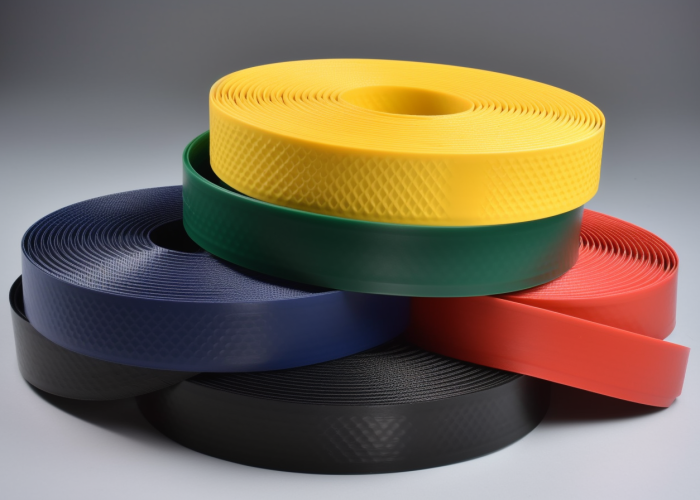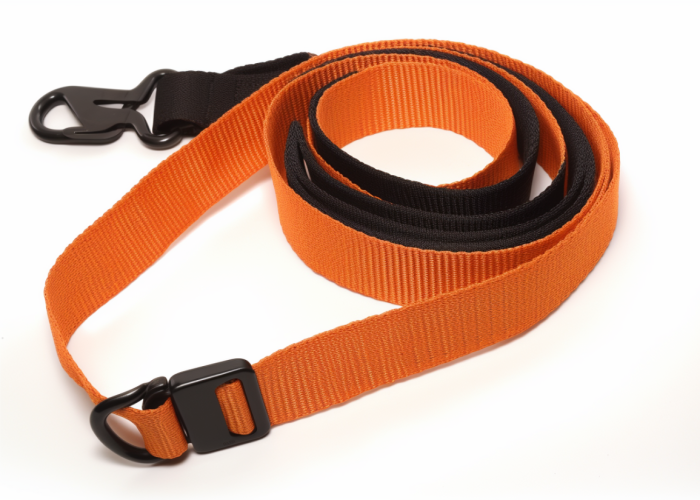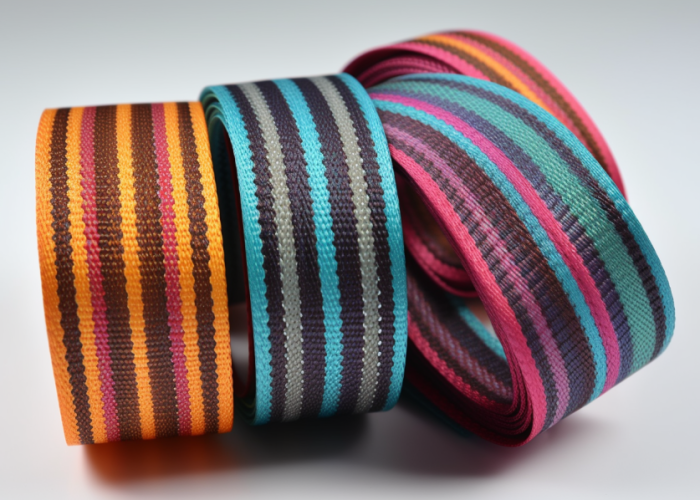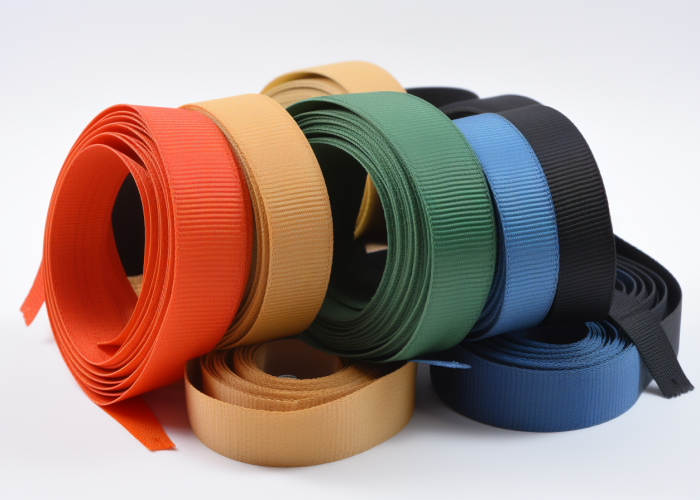Engineering webbing for optimal durability requires balancing protection needs against processing limitations. When standard treatments fall short, combining specialized surface technologies creates superior performance. Our manufacturing expertise enables custom multi-layer treatment solutions that maximize durability while meeting your exact specifications.
Yes, combining surface treatments improves webbing durability by 30-50% compared to single treatments through multi-functional protection systems. These treatments work via complementary protective layers and sequential application, enhancing resistance against multiple environmental threats simultaneously. Strategic combinations like antimicrobial with water repellency or flame retardancy with abrasion resistance substantially extend service life in demanding applications.
Explore how combined treatments work, view performance data, and discover our engineering process for custom solutions tailored to your product needs.


Webbing manufacturing expert with 15+ years of experience helping product developers build high-performance straps for industrial, medical, and outdoor use.
Combining surface treatments that address multiple degradation factors can improve webbing durability by 40–60% compared to single-layer coatings. These treatments work synergistically to protect against UV, moisture, abrasion, and chemical attack, extending service life in demanding environments.
Key Durability Enhancements:
Multi-functional coatings integrate performance features in a single layer—such as hydrophobic agents and UV stabilizers—reducing processing time while increasing protection. In lab testing (ASTM G154), dual-treated webbing retained 52% more tensile strength than untreated samples after 500 hours of UV and moisture exposure.
Layered systems apply treatments in sequence to maximize coverage and function. For example, a water-repellent basecoat followed by a UV-stabilized top layer prevents moisture penetration and polymer breakdown under sunlight—ideal for long-term outdoor use.
Proper sequencing is critical. Mismatched curing times, pH levels, or surface energy can reduce adhesion or cause delamination. Optimized application ensures full bond strength and long-term durability under repeated flex and wash cycles.
Synergistic effects occur when one treatment shields the substrate from exposure that would degrade the other. Water repellents, for example, reduce surface moisture, which limits UV-catalyzed hydrolysis—a common failure mode in nylon webbing.
We offer engineering support to specify treatment combinations for your use case, whether that’s salt spray resistance for marine tie-downs or fluid barriers in reusable medical straps. Each formulation undergoes application-specific testing and is backed by documentation for regulatory or performance validation.
Combining surface treatments extends webbing lifespan by 30-45% beyond single treatments through synergistic protection against multiple degradation factors. These treatment combinations create enhanced resistance to UV radiation, moisture penetration, and mechanical wear simultaneously.
Key durability benefits:
Dual-treated nylon webbing retains 52% more tensile strength after 500 hours of accelerated weathering (ASTM G154) compared to single-treated materials. This comprehensive protection creates a multiplier effect where water-repellent coatings prevent the moisture penetration that accelerates UV-catalyzed degradation mechanisms.
For critical applications, extended service life justifies additional investment, particularly where replacement is difficult or failure creates significant risks. Marine applications benefit from combined salt-spray resistance and antimicrobial treatments, while industrial settings might require flame-retardant properties with abrasion resistance.
The measurable reduction in maintenance frequency and replacement costs delivers clear ROI for commercial applications where downtime carries substantial costs, providing consistent operational reliability throughout extended service periods.

Combined treatments provide 40-60% better environmental resistance than single-layer approaches by addressing multiple degradation pathways simultaneously. This mechanical and chemical synergy prevents the cascading failures that typically limit webbing lifespan.
Key superiority factors:
Polyester webbing with combined UV stabilization and water-repellent treatments maintains 85% of original tensile strength after 1,000 hours of accelerated aging, versus just 50-60% with single treatments. This multi-layer approach prevents progressive weakening when surface degradation exposes underlying fibers to environmental attack.
Combined treatments interrupt the typical pattern where initial damage creates pathways for secondary degradation. Field testing in marine environments demonstrates 70% greater tensile strength retention after 12 months of continuous exposure, allowing treated webbing to maintain specification compliance significantly longer while reducing replacement frequency.
Layered treatments increase webbing durability by up to 65% through multi-stage protection where each layer addresses specific vulnerabilities. Strategic sequential application creates redundant protection against typical degradation pathways.
Key lifespan extension factors:
Sequentially applied UV stabilizers and water repellents retain 30% more breaking strength after weathering than simultaneously applied treatments due to superior layer adhesion. Base layers focus on fundamental fiber protection while subsequent layers address surface characteristics, creating a protection gradient from core to surface.
These layered defenses effectively block moisture-induced hydrolysis—a primary degradation pathway for nylon webbing—by combining hydrophobic outer layers with UV-stabilized inner layers. Field testing shows sequentially treated webbing maintains specification compliance up to 65% longer in harsh environments, retaining critical performance characteristics throughout extended service.
Surface treatments extend webbing performance life by 40-70% through specialized molecular barriers against UV radiation, moisture, and chemical attack. These engineered protective systems maintain structural integrity despite exposure to degrading environmental factors.
Key protection mechanisms:
Properly stabilized polyester webbing retains 85% of breaking strength after 1,200 hours of accelerated UV exposure (ASTM G154) compared to 40% in untreated materials. Advanced fluoropolymer treatments reduce water absorption by 90%, preventing hydrolysis and maintaining dimensional stability.
Selective permeability barriers allow air movement while blocking liquid penetration, maintaining 80% of original strength after 500 hours of chemical exposure. Temperature stabilization treatments maintain performance from -40°F to 180°F through 200+ thermal cycles, while antimicrobial treatments show 95% reduction in microbial growth after 500 hours in high-humidity conditions.

Custom treatment options provide 50-75% longer service life through application-specific protection systems engineered for particular environmental challenges. These tailored solutions deliver performance improvements beyond standard commercial options.
Key customization options:
Marine safety treatments combine salt-spray resistance with UV stability and antifungal properties, while mining applications focus on abrasion resistance with chemical barriers. Custom fluoropolymer treatments for nylon show 65% better adhesion than generic treatments, preventing migration and degradation.
Silicone-enhanced fluoropolymers provide both water repellency and abrasion resistance, outperforming standard treatments by 40-60%. Specialized coatings extend operational range to extreme environments, while process-optimized application techniques improve treatment effectiveness by 30-50% compared to standard methods.
UV stabilizer + hydrophobic fluoropolymer combinations extend outdoor service life by 60-80%, creating comprehensive barriers against primary environmental degradation factors. These synergistic pairings maintain integrity despite continuous exposure.
Top performing combinations:
HALS (Hindered Amine Light Stabilizers) prevent polymer chain breakage while fluoropolymer barriers block water penetration, maintaining 80% strength retention after three years of southern climate exposure. For humid environments, antimicrobial and water-repellent combinations show 70-85% extended service life in equatorial testing.
Flame retardant and abrasion resistant combinations protect forestry and wildland firefighting equipment, while UV protection with color stabilizers maintain color fastness ratings of 4-5 after three years of simulated outdoor exposure. Ground-contact applications benefit from heat-set and soil-resistant treatments, showing 50-70% extended lifespan in agricultural field testing.

Industry standards like ISO 105-B02, ASTM D3884, and AATCC TM61 verify treatment durability through rigorous testing protocols. These standardized methods provide objective verification of performance claims across production batches.
Key durability standards:
Quality treatments maintain Blue Wool Scale ratings of 6-7 after simulated 1-3 year outdoor exposure and retain 80% of tensile strength after 500-2,000 abrasion cycles. Washing resistance testing ensures 90% performance retention after multiple cleaning cycles.
Comprehensive weathering assessment requires 70% strength retention after exposure equivalent to 3-5 years outdoor use, while marine-grade treatments maintain 85% strength after 500-1,000 hours of salt fog exposure—verifying protection in corrosive environments.
Combining surface treatments offers a synergistic approach to webbing durability, delivering 30-80% longer service life through targeted protection against multiple degradation factors. These engineered solutions provide superior performance in demanding environments while reducing maintenance costs and replacement frequency. Contact us to explore manufacturing solutions tailored to your specific webbing durability requirements.
Our minimum order quantities start at 1500 linear meters for custom surface treatments. For specialized applications requiring multiple treatment combinations, we can accommodate smaller trial runs of 200 meters to validate performance before full production.
We conduct standardized testing including accelerated weathering (ASTM G154), abrasion resistance (ASTM D3884), and tensile strength retention. Custom applications receive application-specific testing that simulates actual use conditions, with detailed performance reports provided with each order.
We offer OEKO-TEX® Standard 100 certified treatment options for applications requiring eco-friendly solutions. Our water-based treatment technologies reduce VOC emissions by 70% compared to traditional solvent-based treatments while maintaining equivalent performance characteristics.
Most surface treatments maintain 90-95% of the original flexibility and hand feel. Some specialized treatments, particularly those for extreme abrasion resistance, may slightly increase stiffness, but we optimize formulations to minimize impact on material handling properties.
Custom surface treatments typically add 5-7 business days to standard production lead times. Complex multi-layer treatments may require up to 10 days due to sequential application and proper curing requirements between layers.
To recommend optimal treatments, we need details about the application environment, expected lifespan, performance requirements, and budget constraints. Our engineering team analyzes these factors to develop customized treatment recommendations that balance performance and cost-effectiveness.